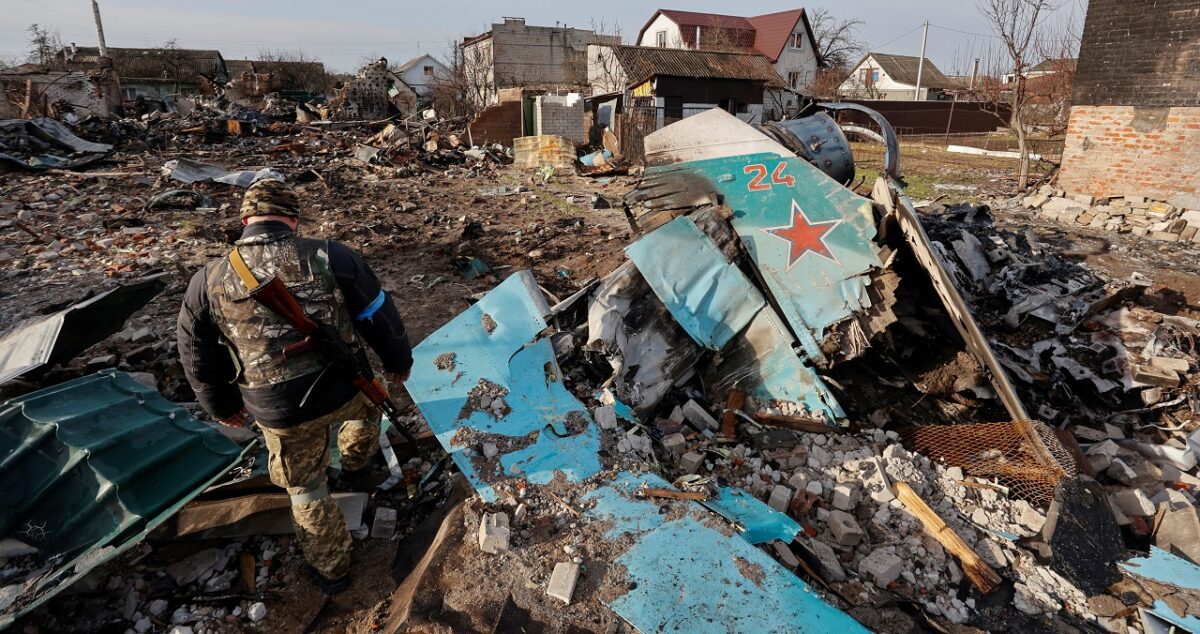The Ukraine-Russia war is grinding to its third year, and so are the claims of inflicting losses on each other’s fleet. Within 24 hours of downing three Russian fighter jets, Moscow claimed to have shot down four Ukrainian warplanes.
Australia’s E7 Wedgetail Makes The 1st Kill; Quite Likely Behind Downing Of Russian Su-34 Bombers: Analysis
Since the start of the war, an outgunned Ukrainian air force has fought vigorously through Top-gun style aerial dogfights and used its air defense system efficiently to keep Russia from controlling the skies.
On December 24, the Russian Defense Ministry claimed that its air defense systems shot down four Ukrainian military aircraft, just two days after the Ukrainian Air Force claimed to have shot down three Russian Su-34 fighters.
Without providing any details about how the aircraft was hit, the Russian Defense Ministry, in its daily dispatch, said its air defense shot down three Su-27 fighter aircraft and one Su-24 tactical bomber in the Zaporizhzhia and Dnipropetrovsk regions of southeastern Ukraine.
In turn, Commander of Ukraine Air Force Mykola Oleshchuk claimed that anti-aircraft units in Ukraine struck a Russian Su-34 ‘Fullback’ fighter bomber near the Russian-occupied city of Mariupol on the Sea of Azov in southern Ukraine. Oleshchuk said on the Telegram messaging app that the aircraft had not returned to its base but gave no further details.
None of the news could be independently corroborated.
Within a month of the invasion, Russia had the realization that the Russian Air Force was unable to tame Ukraine’s air force. Military observers had expected Russian forces to swiftly annihilate Ukraine’s air defenses and air force to gain air superiority. But the war did not unfold as expected.
Ukrainian military forces operating from their territory had the advantage of mobilizing their anti-aircraft missiles to harass — and shoot down — planes at will.
Since then, the Kremlin severely curtailed the deployment of its fighter jets in the war. Most of the Russian war jets would fire missiles and glide bombs from well within the Russian territory. Russians have been using their combat jets in the southern end of the country to target the Odesa commercial port of Ukraine.
Earlier in December, there were reports about the Ukrainian Air Force bringing down a Russian Sukhoi Su-24 M Fencer swing-wing bomber over the Black Sea. This gave rise to speculations that Odesa port, hitherto defended by the Soviet-vintage S-300 missiles with a range of 50 km, was now defended by at least one battery of the Patriot Air Defense System.
On November 25, Ukrainian president Volodymyr Zelensky dropped in at the International Summit on Food Security in Kyiv and announced that Ukraine was preparing to deploy “very powerful air defenses” to Odesa Oblast, which is adjacent to Kherson Oblast.
The Ukrainian air force carefully laid out a trap for the Sukhoi Su-34 glide-bombers, National Security and Defense Council of Ukraine Secretary Oleksiy Danilov told Ukrainian radio.
On December 22, the Ukrainian air defenses brought down three Su-34s, reportedly killing some of the six aviators on board. A Russian Mil Mi-8 helicopter flew in to rescue survivors or bodies. “A dark day,” one Russian military blogger wrote.

F-16s To Resuscitate Air Battles
The losses will force the Russian Air Force to recalibrate their Standard Operating Procedures (SOPs) if they want to continue to use their fighter jets for military objectives.
The other factor that could change the dynamics of air power being used in the conflict is that Ukraine is expecting delivery of the first tranche of its secondhand Lockheed Martin F-16 fighter any day now.
Ukrainian pilots are already learning to fly the F-16s in Romania. The Netherlands, Denmark and Norway have pledged to Ukraine their surplus F-16s. It is expected that Ukraine could get more than 60 of the single-engine, single-seat, supersonic fighters to bolster its existing fleet of aging MiG and Sukhoi fighters.
These first 18 F-16s—out of 42 the Dutch air force could make available in the coming year or so—have been “improved,” Yuriy Ignat, a Ukrainian Air Force spokesperson, told Ukrainian media.
So far, the Soviet-vintage jets in its inventory deployed stock of old Soviet-era bombs and unguided rockets, which are quickly depleting because of limited supplies. It is not just air support for ground troops, the Ukrainians expect Western jets to enhance Ukraine’s air defense systems as well.
The Soviet-vintage jets have old radars that do not see Russian cruise missiles. The range of Western weapons on F-16s will allow them to intercept cruise missiles much before they reach targets in Ukraine.
The Russian air force’s best interceptors, the Mikoyan MiG-31 and Sukhoi Su-35, can engage aerial targets 80 miles away or farther with their R-37 missiles. A Ukrainian F-16 pilot might choose to avoid rather than engage a MiG-31 or Su-35.
- Ritu Sharma has been a journalist for over a decade, writing on defense, foreign affairs, and nuclear technology.
- She can be reached at ritu.sharma (at) mail.com
- Follow EurAsian Times on Google News




